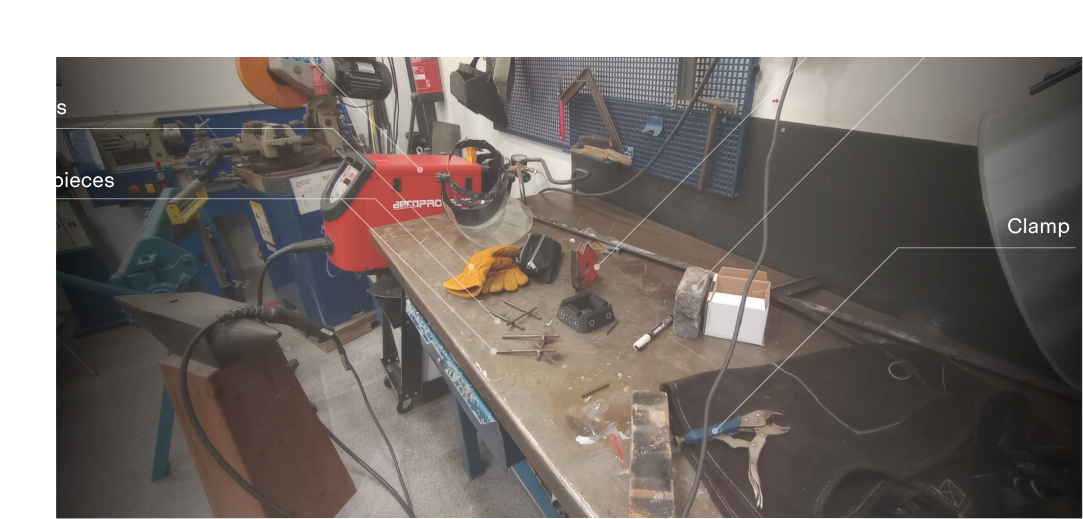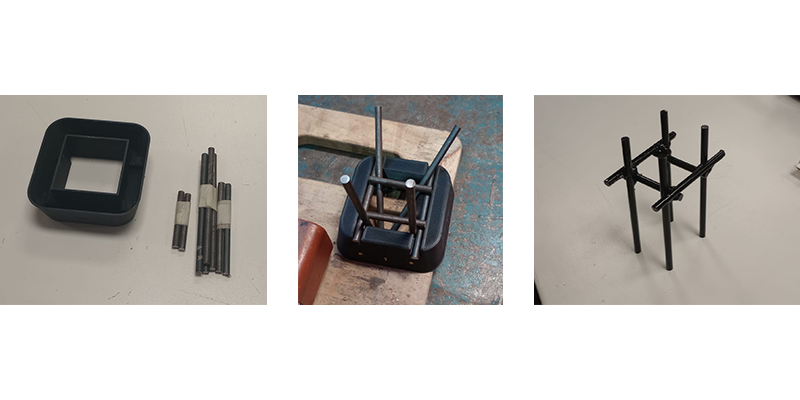Fab challenge 4
The fourth Fab Academy challenge focussed on applications and implications. Combining earlier topics in- & output devices, networks, communication protocols and interfaces.
Wildcard
Welding
As exploratory sidepath of Lemna I welded a small 8mm steel tube frame used in the 'Stipt tray' of Microchallenge 4. After inventarizing the materials the frame was MIG welded, grinded, sanded and painted.


Applications and Implications
What will it do?
Within the broad creative fields in which Lemna started, the project exposes its explorations to trigger and hint at new approaches on agricultural and gastronomical uses.
Who's done what beforehand?
What will you design?
We designed several solutions all related to the growing, sensing and interpretations of local environments. These items will be used as process artifact as well as indicators for future continuation.
What materials and components will be used?
Materials applied in Lemna include Lemna Minor (Common Duckweed), plywood, carbon fiber, aluminum and PLA. In terms of electronics all systems are based on Adafruit ESP32's or Arduino Uno's.
Where will it come from?
For our casings we used disposed boxes and housings. The wood of the tray stand is ±2 m2 15mm plywood from Fablab. The electronics we gathered from either Bricogeek or Diotronic.
How much will they cost?
Almost all external parts required are electronic-related and not specified in a budget. Costs are split 50/50 depending on usage. In total the costs of external sources materials does not exceed €100 pp.
What parts and systems will be made?
A chronological walkthrough slash display that transitions from 'grow' into 'sense' and 'apply'. Each of these terms is represented by a station with its corresponding artifacts.
What processes will be used?
- Electronics (KiCad design, PCB milling, soldering)
- 3D printing (FDM printed PLA)
- Lasercutting (Acrylics, Plywood)
- Woodwork (CNC milling)
- Metalwork (Welding)
- Post-processing (Sanding, painting)
What questions need to be answered?
- With which nutrients can we yield a (series of) high volume foodsafe water lentil batches?
- How do we log our monitored data?
- In which format do we serve our community best?
NB: these questions are urgent for the time being.
How will it be evaluated?
In the first place, by taste. The reason for this is that ideally, we will be able to offer an responsible multi-interpretable product to an audience of interested people. Their evalutions in the shape of new insights, opinions and critique is valuable for next steps.
Invention, intellectual property & income
As duo we started this project from the baseline of the circular, DiDo (Data-in, Data-out) philosophy. Which essentially is key for all of Fablab's day to day work. Without necessarily realising the Shared Learning aspect became one of the major themes.
For my part it felt very new and liberating to share all updates and materials during the process. If in future scenarios certain recipes or specific work files are better kept non-public, a way to keep the open-source character is to share material on request.
